| Programme annuel & rapport de suivi technique |
-
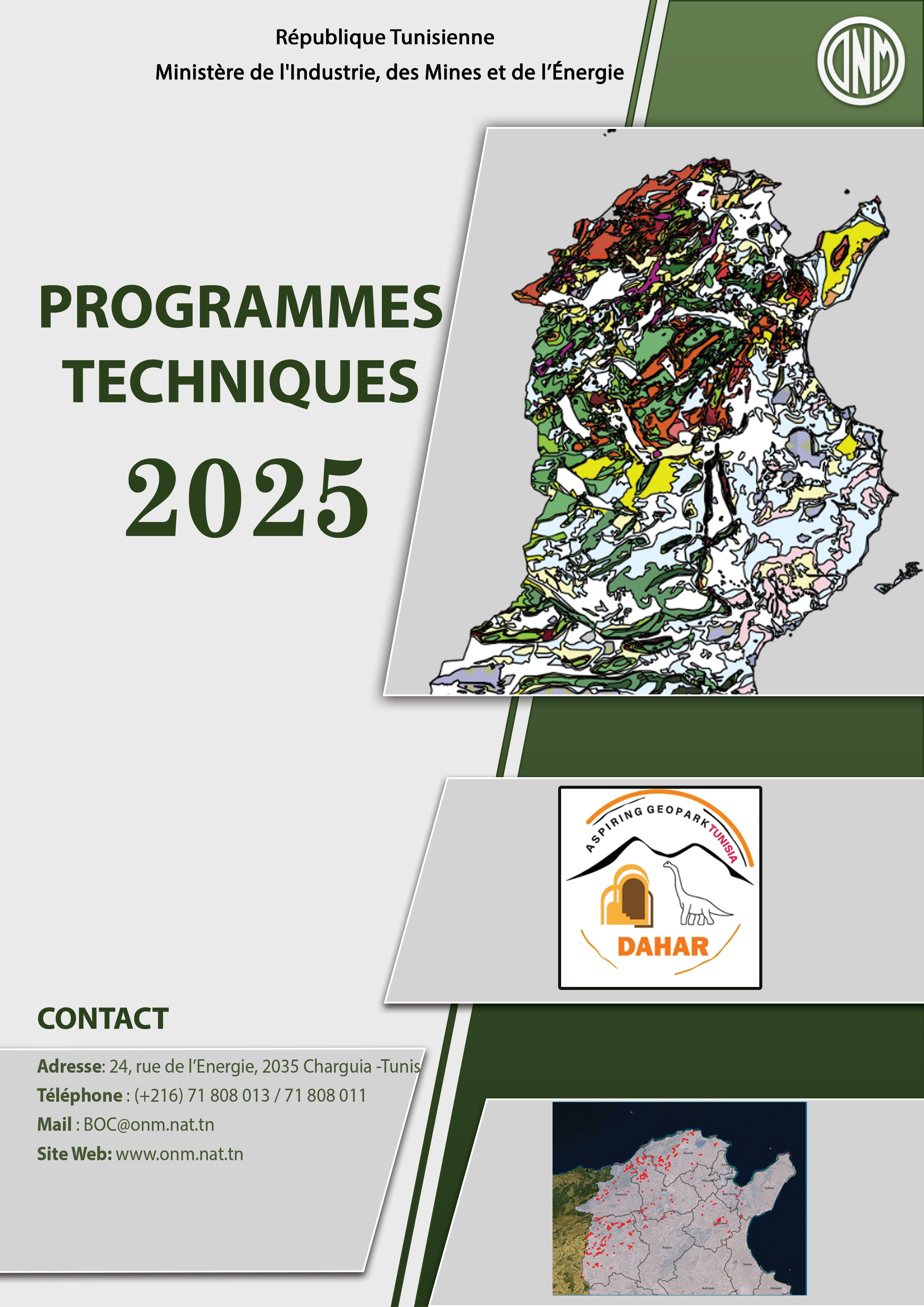
Programmes Techniques 2025
-
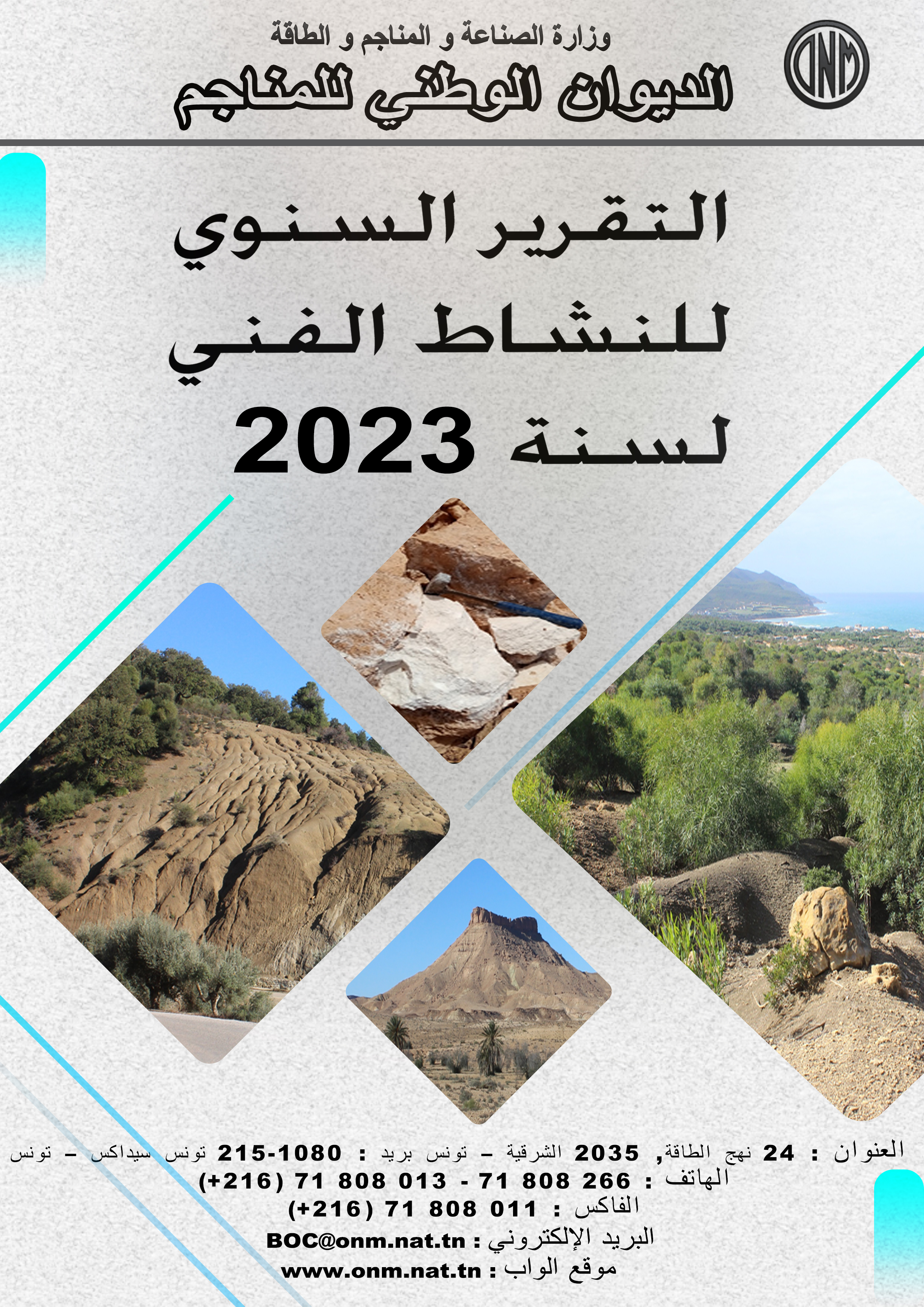
Rapport d'activités 2023
|
| Géocatalogue |
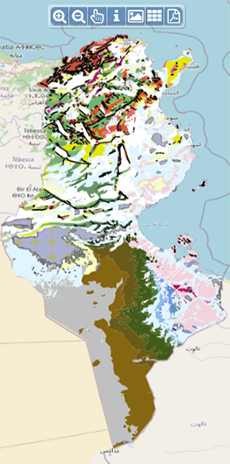
|
| Appels d'Offres |
-

DESIGNATION D’UN REVISEUR COMPTABLE POUR LES EXERCICES 2025-2026-2027
-
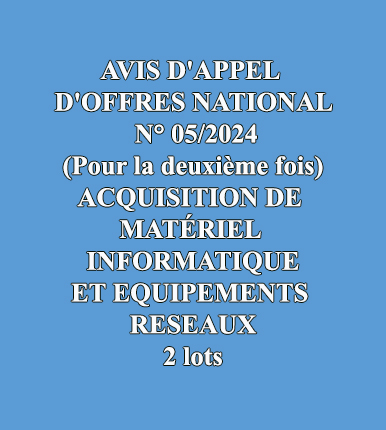
ACQUISITION DE MATERIEL INFORMATIQUE ET EQUIPEMENTS RESEAUX
|
|
Investir en Tunisie |
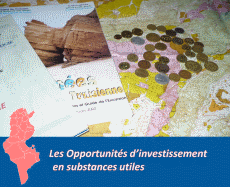

|
|
|
|
|
::
Documentation and Editions
>>
Research library
|
| |
|
[
Search by author
]
[
Search keyword
]
[
Search by index
]
[
Search by category
]
|
title of the reference :
|
Permian reef complex, Tunisia.
|
|
Publication Date:
|
1976
|
|
Author :
|
Newell Norman D., Rigby J.K., Driggs Allen F., Boyd D.W., Stehli Francis G.
|
|
Catalogue type :
|
Livre
|
|
Catalogue reference :
|
Vol. 23, N°1 (USA) Brigham Young Univ. Geol. Stud. Vol. 23, N°1 Permian reef complex, Tunisia. Les complexes récifaux permiens, Tunisie. The only exposures of marine Permian strata in northern Africa from an inlier in southern Tunisia. The outcrops, some 18 square kilometers in extent, exhibit a sequence of at least 850 meters of marine strata grading upward into nonmarine redbeds. Apparently conformable relationships of Permian and Triassic strata and the gradual regressive sedimentation of the Permian section suggest a quiet withdrawal of the Tethyan sea not interrupted by plate collision. The Permian rocks represent a reef complex between a shale basin to the north and shelf sediments on the Saharan Shield margin to the south. Two large bioherms in the western area interfinger eastward with drab shale and are overlain by a thick Permo-Triassic redbed section. A large bioherm at the eastern end of the range grades westward and upward into drab shale and shelf carbonates. Reef frame is indeterminate in the ordinary exposures of the major bioherms, whereas scores of well-preserved small bioherms display zoned frames of tabulate corallines, bryozoans, sponges, and algae. General lack of reef talus and presence of micritic reef matrix suggest a low-energy environment. Interbioherm faunas contain abundant sponges, bryozoans, and tabulate corallines. Brachiopods, gastropods, bivalves, and echinoderm groups are quantitatively insignificant. A fine sequence of fusulinaceans of the Neoschwagerina-Yabeina assemblage makes this section ideal for a regional Permian stratotype.
bibliogr. bioherme ; calcaire microcristallin ; grès ; shale ; sédimentation récifale ; sédimentation marge continentale ; biofaciès ; faune foraminifère ; coupe géologique ; fusulinidae ; Permien ; Tunisie ; Tunisie Sud Orientale ; J. Tebaga Stehli Francis G. Rigby J.K. Driggs Allen F. Boyd D.W. Newell Norman D. Stratigraphie
|
|
Indexation decimale :
|
Stratigraphie
|
|
Keywords :
|
bioherme ; calcaire microcristallin ; grès ; shale ; sédimentation récifale ; sédimentation marge continentale ; biofaciès ; faune foraminifère ; coupe géologique ; fusulinidae ; Permien ; Tunisie ; Tunisie Sud Orientale ; J. Tebaga
|
|
Summary :
|
The only exposures of marine Permian strata in northern Africa from an inlier in southern Tunisia. The outcrops, some 18 square kilometers in extent, exhibit a sequence of at least 850 meters of marine strata grading upward into nonmarine redbeds. Apparently conformable relationships of Permian and Triassic strata and the gradual regressive sedimentation of the Permian section suggest a quiet withdrawal of the Tethyan sea not interrupted by plate collision. The Permian rocks represent a reef complex between a shale basin to the north and shelf sediments on the Saharan Shield margin to the south. Two large bioherms in the western area interfinger eastward with drab shale and are overlain by a thick Permo-Triassic redbed section. A large bioherm at the eastern end of the range grades westward and upward into drab shale and shelf carbonates. Reef frame is indeterminate in the ordinary exposures of the major bioherms, whereas scores of well-preserved small bioherms display zoned frames of tabulate corallines, bryozoans, sponges, and algae. General lack of reef talus and presence of micritic reef matrix suggest a low-energy environment. Interbioherm faunas contain abundant sponges, bryozoans, and tabulate corallines. Brachiopods, gastropods, bivalves, and echinoderm groups are quantitatively insignificant. A fine sequence of fusulinaceans of the Neoschwagerina-Yabeina assemblage makes this section ideal for a regional Permian stratotype.
|
|
Exemplaries :
|
TU238B, TU238A
|
|
|
|
|
|
|
|



